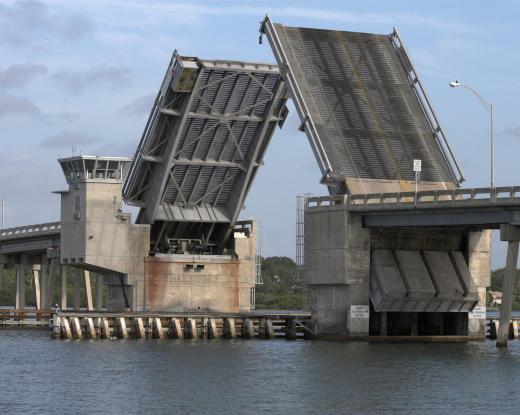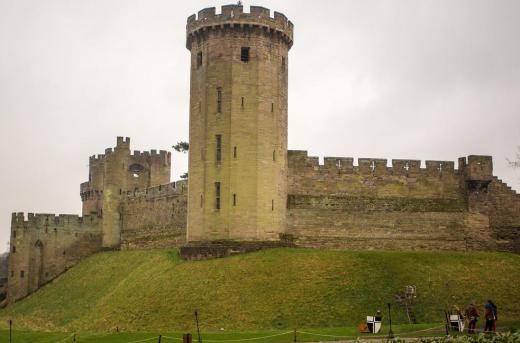What is a Bascule Bridge?
A bascule bridge is a type of drawbridge consisting of two counterweighted leaves or spans which pivot upward on a horizontal axis to allow boat traffic to pass underneath. The counterweights help balance each side of the bridge during the upward swing, which assists in the lifting motion. Bascule bridges are the most commonly found movable bridges in the world, most likely because they open quickly and easily once established, and operate on very little energy.
The bascule bridge originated in medieval Europe to help defend castles and towns. These first movable bridges were operated by men using a winch and counterweight. One portion of the Old London Bridge was actually a bascule or drawbridge, and it was lifted occasionally to allow ships with tall masts to pass through. However, it wasn't until the 19th century that these bridges became popular for aiding the navigation of large ships. The first large bascule bridge, The Blagoveshchensky Bridge, was built in St. Petersburg in 1850.

There are two primary types of bascule bridges — single leaf and double leaf. A single leaf bridge is composed of several connected elements, and its counterweights are elevated above the bridge. A double leaf bridge is similarly constructed, but the counterweights are located beneath the bridge. Most bascule-style bridges are double leaf, and consist of two leaves or spans, which meet in the middle over the navigation channel. Single leaf bridges consist of only one leaf or span, which connects to the opposite side of the channel.

There are numerous variations and designs of the bascule bridge, including the heel-trunnion and rolling lift bridges. The heel-trunnion bridge, also known as the fixed-trunnion, has the counterweight and bridge on separate pivots. The rolling lift bridge rocks back and forth on a track while opening. There are also a few bascule bridges which have no counterweight at all, the most famous being the 16th Street Bascule Bridge in Milwaukee, Wisconsin in the United States. Many other variations have been patented since the 19th century, but the heel-trunnion continues to be the most popular and widely constructed.
AS FEATURED ON:
AS FEATURED ON:












Discussion Comments
@JessicaLynn - I've never thought of a draw bridge as "energy efficient" but what you said makes sense.
I am relieved to see that these bridges are considered safe. Every time I've been on a drawbridge and had the drawbridge lift up to let a ship through I've been terrified. I don't know what I thought was going to happen but it seems my fears were unfounded!
There are a few bridges near me that I'm pretty sure are bascule bridges. I live near a major shipping lane so large ships are always passing through. It's actually pretty common to get stuck in traffic waiting for the drawbridge to go down again!
Reading this article, I'm amazed that as much as technology changes a design from the medieval era is still in use. I think it's also pretty neat that it doesn't use too much power; I feel like everything is about energy efficiency these days. It's funny that a design this old is actually energy efficient!
Post your comments